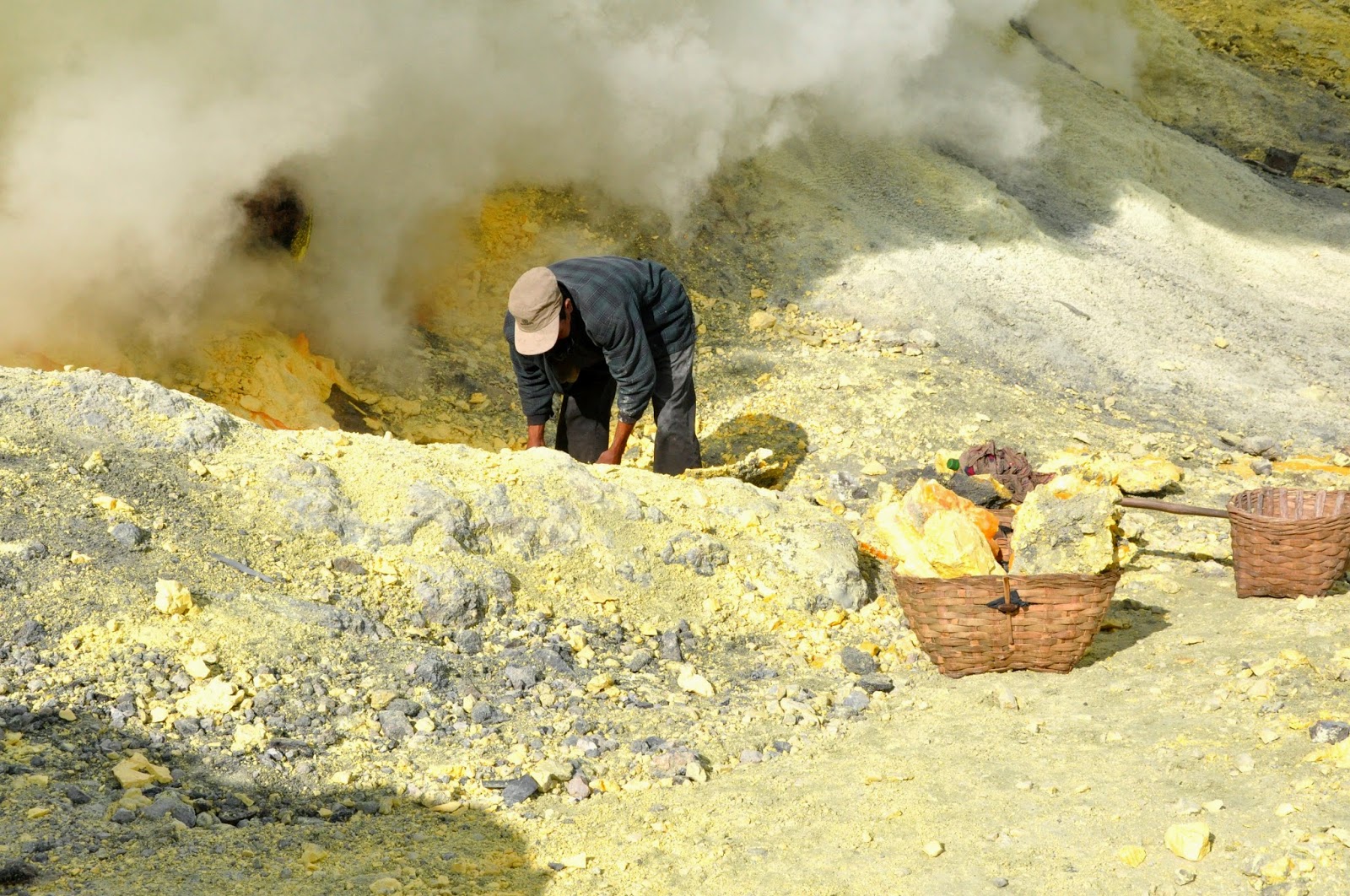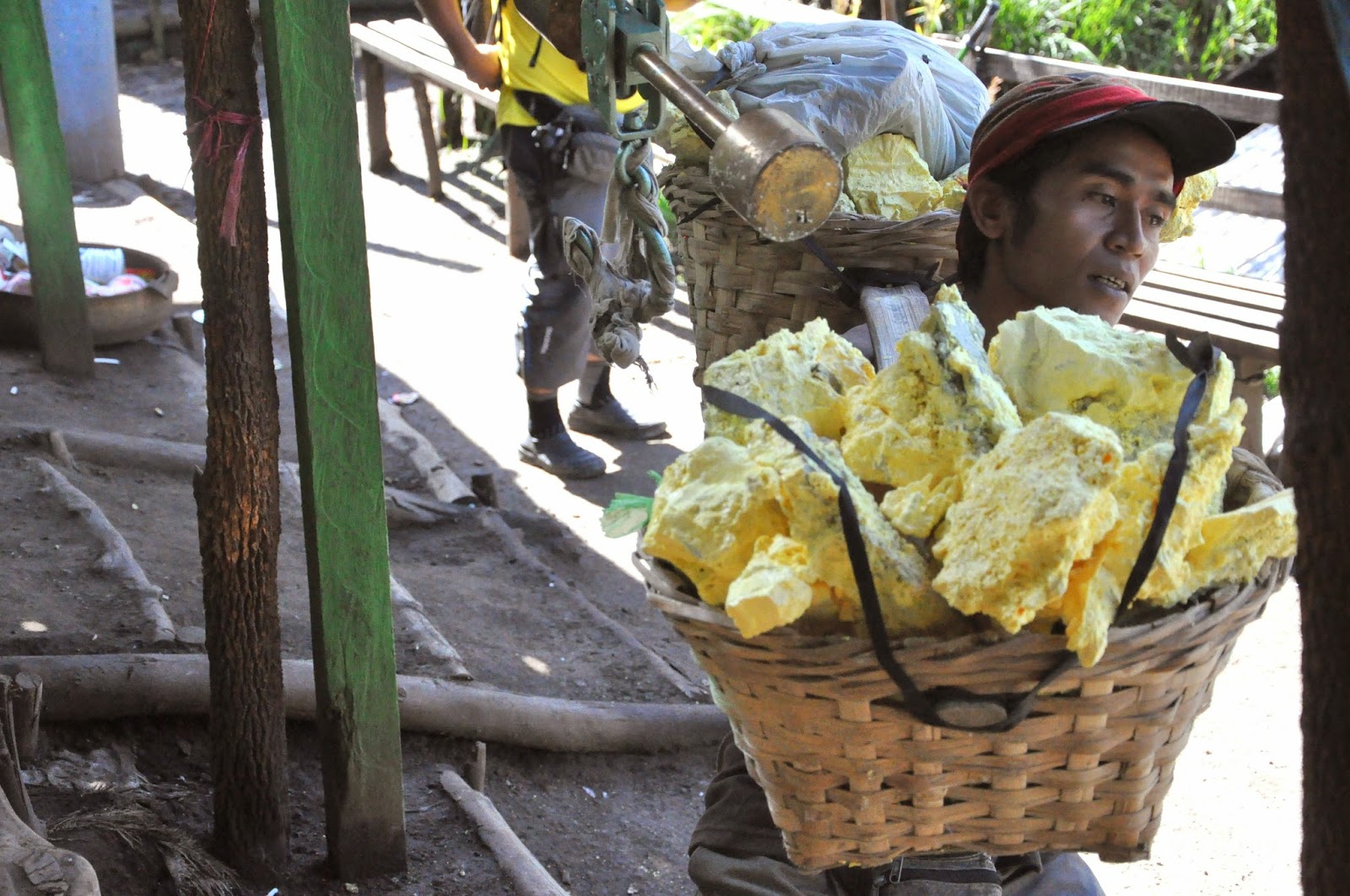 |
| The largest acidic volcanic crater lake in the world |
 |
| We're in Paltuding - 3 km to go |
We told Hasbullah, we will be starting our journey after fajar which is about 4.15 am. No hurry, I told him since we're not going after the blue flame. He nodded his head faithfully. In the dark, our jeep hit the bumpy, rough, narrow roads with potholes. At about 5.15 am we arrived in Paltuding (1,850m above sea level), the base and starting point before the 3 km climb to Ijen Crater. Ijen Crater or Kawah Ijen is 2,799m and for us the 3 km hike is a struggle!
 |
| A serious sign board to remind climbers |
 |
| The sulfur at rest while the miner makes a turn back for another load |
 |
| Huge chunks of sulfur |
 |
| Mount Merapi behind us - this is a different Merapi found in Central Java |
 |
| Mount Raung just next to Mount Merapi at the background |
While it takes the fittest person to ascend Ijen crater in one hour, we did it in two hours and most people did the whole journey in 3 hours and we took five hours :)! Never mind, we made it and we didn't make or ever thought of a turn back. Once the first 2 km is over, the mesmerizing view is worth all the troubles. The path began to get scenic and we made several stops for photographs. With Mount Merapi and Raung behind us, we can't help turning our heads occasionally to catch a glimpse of the mountains.
Soon we came to the flattest part of the mountain with a massive view of the caldera laid perfectly before our eyes. We forgot about our aching feet and trembling knees. The stunning view just took our breath away We saw the three girls in our group neatly tucked on the slope of the mountain taking a rest. At about 10 am the wind starts to spread the acidic sulfuric smokes across wider area and by 2 pm access to the crater is closed as hiking is impossible with thick smokes covering the crater.
 |
| Landscape at the rim of the crater |
 |
| Glad we made it! |
 |
| Stratovolcano - last eruption in 1999 |
 |
| A worker at the edge of the lake |
 |
| Water source for river Banyupahit - making it highly acidic and metal polluted |
 |
| The path down the crater |
 |
| The sulfur miners exposed to the dangerous sulfur smokes daily |
 |
| The rocky 'path' the miners climb every day |
 |
| From the other side of the crater we watched the miner |
 |
| A miner at rest with his load just after the ascend from the crater |
 |
| The corrosive blue green water |
 |
| Tourists who successfully made up to the top |
 |
| Beautiful landscape with hardly any vegetation surviving here |
 |
| The unusual beauty that outweighs the risks |
 |
| The miner's walk produces the squeaking sound of the bamboos basket, |
 |
| The rest point at the mid-way of the journey |





























